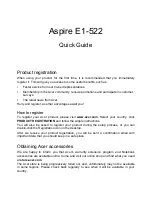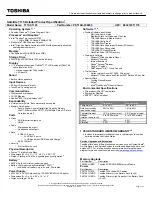
Power
Startup and Reference Guide—Part 2
4–13
Managing Low-Battery Conditions
The information in this section describes default alerts and
system responses.
Identifying Low-Battery Conditions
When the battery pack is the only power source for the notebook
and drops to 10 percent of a full charge, the notebook has reached
a low-battery condition. A text warning message appears on the
screen.
If a low-battery condition is not resolved and the amount of
charge remaining in the battery pack continues to drop, the
notebook eventually enters a critical low-battery condition. Then,
if the notebook is on or in Standby:
■
If Hibernation is enabled, the system initiates Hibernation.
Unsaved work may be lost.
■
If Hibernation is disabled, the notebook remains briefly in
Standby, then shuts down. The power/standby light turns off,
and the notebook cannot save system memory to the hard
drive.
Resolving Low-Battery Conditions
Ä
CAUTION:
If the notebook has reached a critical low-battery condition
and has begun to initiate Hibernation, do not restore power until
Hibernation is complete. When Hibernation is complete, the
power/standby light turns off.
If external power is available, connect the notebook to the
external power source.
If a charged battery pack is available, shut down the notebook
or initiate Hibernation. Insert a charged battery pack, then turn on
the notebook.
If no power source is available, save your work. Then initiate
Hibernation or shut down the notebook.
345561-001.book Page 13 Monday, July 14, 2003 11:19 AM
Summary of Contents for 345561-001
Page 19: ...Startup and Reference Guide Part 2 Part 2 Reference ...
Page 20: ...Startup and Reference Guide Part 2 ...
Page 68: ...4 20 Startup and Reference Guide Part 2 Power ...
Page 140: ...9 16 Startup and Reference Guide Part 2 Software Updates Restorations and Utilities ...
Page 144: ...A 4 Startup and Reference Guide Part 2 Specifications ...
Page 156: ...Index 12 Startup and Reference Guide Index ...
Page 157: ......
Page 158: ......
Page 159: ......
















































